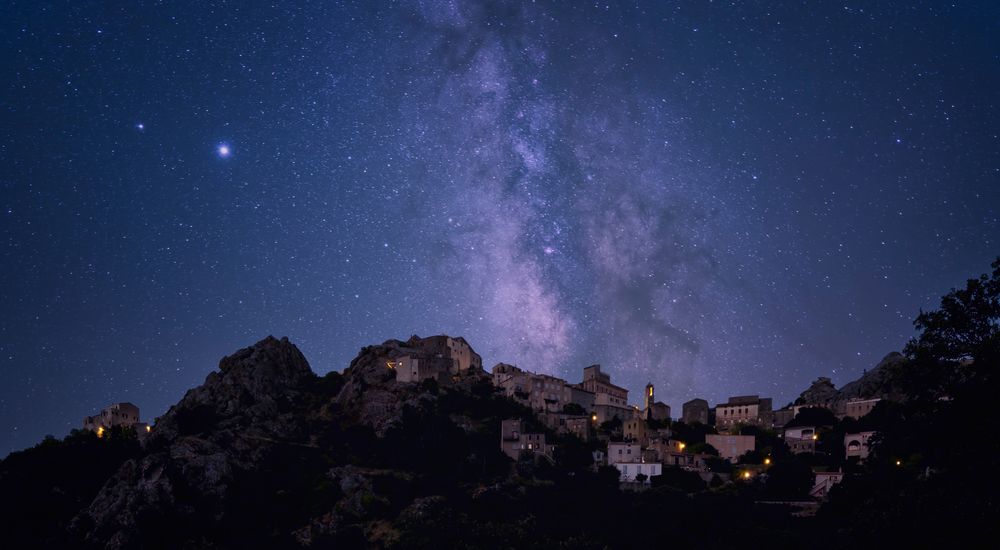Urban lighting: 6 ways to create local dark infrastructures
Where to start the fight to combat light pollution? Here are six ideas on how to create dark infrastructures in your city.

It is vital to understand the importance of dark infrastructures: for the protection of biodiversity, the reduction of the impact of urban lighting on the environment and of energy bills and even to promote eco-tourism. But where to start the fight to combat light pollution? Here are six ideas on how to create dark infrastructures.

Dark infrastructure: what is it and why it's important
1. List the zones of conflict and opportunities
Much too often urban lighting is excessive and even ill-adapted. Before thinking about how to create dark infrastructures, you need to get an overview of your public lighting fixtures, define the most problematic zones and determine the ecological corridors which could be created. The CEREMA suggests measuring (1):
- spatial data (the number and positioning of street lights);
- temporal data (the duration of lighting and at what time it is turned off at night);
- generic data: measurements of the light bulbs (composition of the light, orientation, bulb types, wattage, etc.).
Then you need to identify:
- the flora and fauna in the ecological network;
- the conflict points or zones in the ecological network and the causes of fractures.
With these data, you can conserve and reinforce what exists already and/or restore a nocturnal ecological corridor in the most effective possible way.
2. Invest in more suitable light sources
How many candelabra type street lights did you list which light the sky more than the ground? How many street lights are over 25 years old? How many have a fixed power consumption? How many still have mercury vapor bulbs?
By choosing softer lighting directed downwards by shades or reflectors, fitted with timers and/or motion sensors, you can act already. But be warned, if you choose LED technology: although they use less power and are more effective, most LEDs on the market project high levels of blue light, recognized as harmful for retinas, having a strong power of attraction for insects and the fact that it disrupts the circadian cycle. So, like any other light source, only use LEDs with moderation.
Learn more about LED street lights
Blue light free LED bulbs exist but are not in widespread use. They can be combined with sodium vapor lamps (which are not good for bats). Other solutions currently studied include bioluminescence.
3. Change the street lamp layout
A study by biologist Antoine Sierro in 2019 (2) found that lamps pointing towards the ground should be spaced a minimum 50m apart and be a maximum of 4 to 6m tall. So there is no point in installing street lamps every 20 meters! And there are places that do not need to be lit at all, like:
- along waterways;
- near houses;
- in front of bat colonies;
- in front of woodlands and forest roads.
Generally speaking, urban lighting should meet a real need and leave ecological corridors unlit.
4. Choose nonreflective pavement surfacing
It may seem surprising but road and pavement surfacings also play a fundamental part in the creation of dark infrastructures (1). Reflective pavements redirect light towards the sky, contributing to the formation of a light halo having a noxious effect on the environment. You can limit reflections by choosing a light-absorbent coating, like a dark surface.
However this choice may contradict actions taken to limit heat pockets by using bright surfaces so this will have to be decided on a case-by-case basis.
5. Banish backlit advertizing panels and neon signs
In September 2022, France adopted a decree to prohibit backlit advertizing panels. But the decree only applies between 1 and 6a.m., a prohibition considered insufficient by several associations and which does nothing but add clauses to another decree published in 2012 and hardly enforced at all. Each public authority is, however, free to go further in its fight against light pollution, like Paris, which will compel advertizing panels to be turned off at 11.45p.m. by December 1, 2022, except for public information panels(3) and Greater Lyon which intends to totally prohibit all advertizing and neon signs(4).
According to the ADEME, a 2sq.m. digital LCD advertizing screen consumes approximately 2,049 kWh/year, the same average annual consumption of a household for lighting and electric domestic appliances. This will save a lot of money which is why public authorities are very interested!
6. Eliminate street lamps and lights with unmodifiable power supplies
Did you know that with the latest innovations in urban lighting, it is possible to modulate the duration, the frequency and also the power consumption? To create dark infrastructures, the best way is to turn off public lighting completely. But when that is impossible, you can turn it down.
According to biologist Antoine Sierro (2), a combination of the reduction of 50% of light and total extinction between midnight and 4.00a.m. would minimize the negative effects of artificial light on invertebrates. Additionally, think of timers and motion sensors, hybrid wind /solar panel powered lamps and putting cats-eyes along the roads.
Power your street furniture with solar energy
Many public authorities already turn off their urban lighting wholly or partially for many different reasons. Some have even obtained “Villes et Villages Étoilés” label which make their areas even more attractive!
To communicate with sometimes skeptical locals about this approach, it can be a good idea to invite them to a starry sky observation workshop, or help them discover the life of nocturnal animals during a summertime stroll or organize question and answer meetings to explain why and how it is important to create dark infrastructures locally.
Rethink your urban lighting with Paysalia
(1) CEREMA: Trame noire en Hauts-de-France : Mission d'assistance de la DREAL et du ministère de la transition écologique et solidaire en 2019
(2) Ecole Economie: La lumière nuit ! LA NATURE FACE À LA POLLUTION LUMINEUSE
(3) Le Monde: La Ville de Paris vote l’extinction de la publicité lumineuse la nuit à partir de décembre
(4) France 3: La métropole de Lyon adopte un nouveau règlement local de publicité
© Photo credit: Jon Ingall / Adobe Stock



